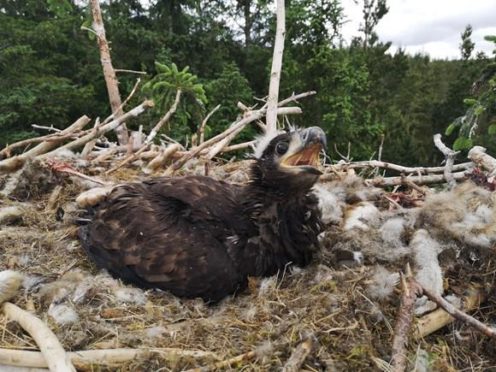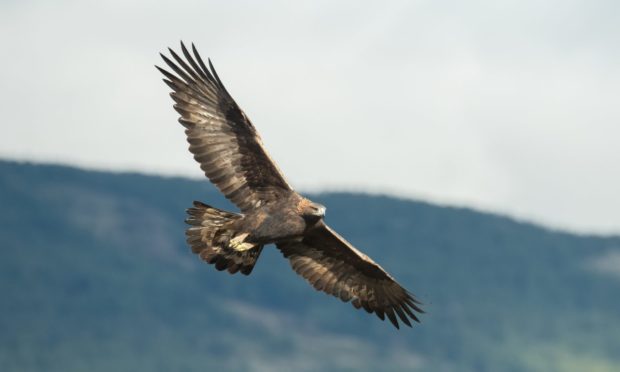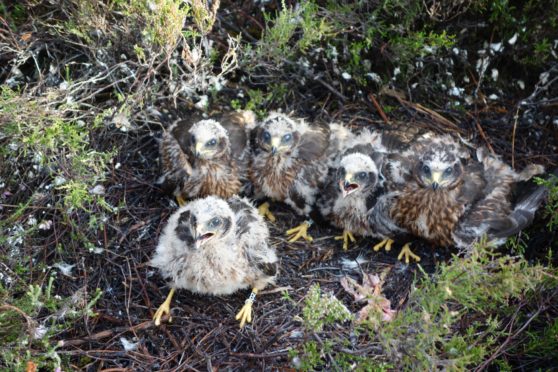A healthy male sea eagle chick has hatched at Balmoral, marking the bird’s first successful breeding season there.
Despite unsuccessful attempts in the past, this year’s breeding season was more positive.
The breeding pair have been observed on Balmoral in recent years through satellite tagging.
The sea eagles were closely monitored by the Royal Society for the Protection of Birds (RSPB) in collaboration with the Balmoral Ranger Service throughout this breeding season.
The chick has been ringed and will be watched closely, along with three golden eagle chicks that also hatched on the estate this year.
Richard Gledson, estate manager at Balmoral said: “All at Balmoral Estate are delighted that sea eagles have nested successfully for the first time.
“A previous nesting attempt in 2017 on the same site sadly failed and we have had our fingers crossed since then.”
Balmoral is one of five estates that form the East Cairngorms Moorland Partnership (ECMP).
It is supported by Cairngorms National Park Authority and aims to improve the conservation status of raptors in the area.
More raptor success
The chick is one of many that has hatched across estates in the east of the Cairngorm National Park this year.
ECMP tag as many chicks as possible so that their movements can be tracked and analysed, helping the team protect them.
Golden eagle chicks have hatched and been tagged at Glenavon, home of one of the highest nesting sites in Scotland, and at Glenlivet.
Mar Lodge has not only welcomed golden eagle chicks but five hen harrier chicks too.
Though Mar estate was lucky enough to have a sea eagle chick hatch there last year, this year the breeding pair were unsuccessful. This could have been due to poor weather conditions.
Dr Ewan Weston of the North East Scotland Raptor Study Group, who has taken part in the tagging efforts across ECMP estates, said: “This year’s raptor tagging on ECMP estates builds on a positive collaboration with the estates over recent years.
“Despite a very wet, snowy May, the general picture in the area is that raptors, particularly golden eagles, red kites and hen harriers have done well.”
Conservation efforts
As well as protecting raptors, the ECMP also works to demonstrate best practice muirburn management, expand areas of woodland and restore scrub and peatland.
A wide range of ecologists work with the Partnership to support and protect the area.
Further work on the environment will in turn help the success of raptor breeding in the area.
Xander McDade, convenor at the Cairngorms National Park Authority, said: “We are delighted to hear that productivity of raptors in the east of the National Park looks good for 2021.
“However, we know that we can still do more for the birds and are committed to finding ways of improving the conservation status of moorland raptors, along with other red and amber moorland bird species.”


